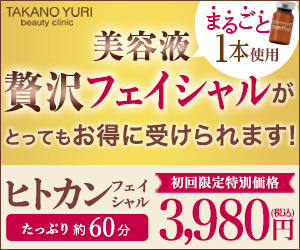【名古屋】顔フェイシャルエステサロンクリニック体験おすすめ人気ランキング!口コミ評判【PR】

名古屋にある顔エステを徹底比較!美肌・顔やせ・小顔・顔脱毛
名古屋駅の近くにもお手軽に通えるフェイシャルエステはあります!
フェイシャルエステは名古屋にはたくさんあるからどこに行ったらいいかわからないですよいね
美肌を目指しているのであれば、ホームケアだけでなくエステサロンでフェイシャルエステを受ければ
理想の美肌を手に入れる事が出来、ホームケアがより簡単になります。
フェイシャルエステと小顔エステがセットになったコースを提供しているエステサロンもあり1つのケアで沢山の効果が得られると評判です。
小顔エステとフェイシャルエステを個々に契約するよりもリーズナブルに施術を受ける事が出来ますし、より集中的なケアを受ける事が出来るので
そういったプランを扱っているエステサロンの需要が高まっています。
名古屋フェイシャルエステも人気のサロンと言えば、たかの友梨です。
たかの友梨は毛穴の黒ずみやたるみで悩んでいる方におすすめです!
1回で小顔になってつるつるのお肌になれますよ!
名古屋フェイシャルエステの体験は格安で受けれるからいくつか受けてみるのをおすすめします。
フェイシャルエステ名古屋ランキング【PR】
ヒト幹細胞美容液をたっぷり使用したエイジングケア効果が期待できるエステコースです。
ポイントクレンジング、クリームクレンジング、泡クレンジング、ゴールドピーリング(角質ケア)、クリアローション&アクアミストの5工程により、肌や毛穴から余分なものを取り除きます。
まっさらな肌にヒト幹細胞美容液を噴霧することにより、細かな肌の隅々まで美容液成分が行き渡り、年齢肌の悩みを解決していきます。
最後にヒト幹細胞美容液を配合したクリームを塗布し、潤いを閉じ込めます。
美しく年齢を重ねていきたい大人の女性におすすめです。
マナラ(MANARA)ホットクレンジングゲルは美容液成分91.3%。
W洗顔不要、まつエクOK。美容液のような温感ゲルです。
詰まりに詰まった毛穴の黒ずみを除去し、毛穴の開きを引き締めます。
古い角質を落とし、スキンケアの効率を高めてブースターの役割にもなり、使用する度にどんどん美肌になっていきます。
肌の保湿効果が高く、乾燥肌の人にもおすすめです。
7つの無添加製法により、デリケートなお肌でも毎日安心してお使いいただけます。
ヒアルロン酸やスクワラン、セラミド、ローヤルゼリーエキス、ハイドロキノン誘導体、ナノ化ビタミンC誘導体も配合しています。

